

European
Nuclear Society
e-news
Issue 28: May 2010
Mother Nature has a habit of reminding us every so often who is boss, as thousands of stranded travelers and businessmen and women found out to their cost after the recent eruption of the Eyjafjallajökull volcano, in Iceland. The grave risk that the massive cloud of ash posed to the safety of aircraft forced airports to close down. Airline companies warned of potential financial losses. International conferences had to be cancelled at short notice. And that was just the start of it. Medical authorities in the worst affected countries advised people to filter the air they breathe by wearing a damp cloth over their mouth or a face mask. According to specialists in respiratory diseases the combination of volcanic ash with moisture in the lungs can create a substance akin to liquid cement – not the nicest of propositions! Well, you don’t need to be Sherlock Holmes to deduce that the potential threat of volcanic ash is not just to jet engines and the environment as a whole but, more specifically, to human health too. People who suffer from acute respiratory problems such as asthma or emphysema are especially vulnerable.
Images of thousands of South East Asians walking or cycling to work with face masks on, trying to avoid breathing in the deadly smog that regularly paralyses their cities, have periodically haunted our television screens. The recent volcanic eruption, coupled with these apocalyptic images from the other side of the world, got me thinking about why it is that poor air quality, with its blatantly obvious negative effects upon human health and the environment, is not given as much oxygen of publicity as the CO2 emissions that engender climate change. Perhaps we are more concerned about the environment in general than the more immediate effect of certain pollutants upon human health? This in turn led me to consider why it is that one of the main advantages of nuclear energy, the fact that it is a clean air energy source, is often underplayed. When we think about harmful emissions the first thing that we tend to think of is the CO2 emissions. The global preoccupation with reducing these emissions has inevitably grabbed the political and scientific spotlight because promoting the low-carbon economy has become a sine qua non synonymous with safeguarding the environment. The nuclear community rightly stresses that nuclear is CO2-free, unlike fossil fuel energy alternatives. However, the rush to grasp the low-carbon Holy Grail has tended to allow other equally obnoxious pollutants to slip inadvertently under the radar and avoid the same degree of public admonishment.
The toxic cocktail of substances like sulphur dioxide and nitrous oxide that are emitted by various polluting industries (and, significantly, by volcanoes too), in spite of strict national and European legislation, is just as damaging to the environment as CO2 This is because these chemicals are precursors to the acid rain that so blights our cities. More significantly, they pose a threat to human health – just like the volcanic ash. Studies have shown that acid rain particulates can cause respiratory illnesses and are even linked to premature deaths from diseases such as cancer. Of course, the famous “REACH” legislation that was passed by the European Commission did target many of the chemicals that pollute the air, but somehow they don’t seem to get the global attention today that CO2 emissions do. Try explaining why that is to asthma sufferers or to Chinese citizens who have to run the gauntlet of airborne pollutants on a daily basis.
If these products were more publicised then an additional environmental advantage of nuclear energy would be better appreciated. Yes nuclear energy is clean air energy, but perhaps we don’t make enough of this fact? Within such a communications void common myths and misconceptions about nuclear power plants stubbornly persist – for example that the white smoke-like clouds that are emitted from a nuclear power plant’s cooling towers add to air pollution. We know that it is just steam that emerges from a nuclear plant’s cooling towers, but do enough members of the public know it? An increasingly environmentally-conscious public that rightly sees clean air as a basic human right, not a luxury, needs to know that nuclear energy does more to help the environment than just mitigate the effects of climate change by not emitting CO2. It also helps the environment and human health by not emitting those dangerous substances that pollute the air that we breathe. It is up to the nuclear community to make its voice heard on the issue of nuclear’s clean air credentials. By doing so we can help dispel common myths and help further increase public acceptance of nuclear energy.
A bumper edition ENS NEWS N° 28 kicks off with a Word from the President on the upcoming ENC conference in Barcelona. This is followed by a thought-provoking piece from Andrew Teller on the merits - or otherwise - of the World Wildlife Fund’s annual Earth Hour initiative, which attempts to raise awareness of the environmental threat to out planet of excessive energy consumption. Finally, ENS’s High Scientific Council provides a position paper on nuclear proliferation in response to the nuclear disarmament deal that was recently signed between the US and Russia and to the deteriorating situation in Iran and Korea.
The ENS Events section features information on the upcoming ENC conference in Barcelona, one of the most important conferences on the international nuclear events calendar, which has a packed programme and an impressive cast of top-level speakers.
The Member Societies & Corporate Members section contains a number of reports: member society news updates from Hungary, Finland, Spain and Belgium; a feature on nuclear training and educational initiatives in Romania; a detailed look at the Belgian BR2 high-flux reactor that produces medical radioisotopes; a profile of Spanish company ENUSA’s international business portfolio; a report on Westinghouse’s growing presence on the UK market; an appraisal of the Centralised Storage Facility (ATC) in Spain that will store the country’s spent fuel and high-level radioactive waste and an obituary to Juan Antonio Rubio, the Director, General of CIEMAT, in Spain, who sadly passed away recently.
The Young Generation section of ENS NEWS N° 28 is equally full of interesting news items and reports. These include a summary of the RRFM conference, which took place for the first time outside of Europe – in Morocco, a feature from the Czech YGN on the first woman to operate a control desk at a nuclear power plant in the Czech Republic; a Spanish YGN perspective on the ATC in Spain and a report from Croatia on the IAEA’s International Conference on Human Resource Development for Introducing and Expanding Nuclear Power Programmes, whichtook place in Abu Dhabi, UAE, from 14 -18 March 2010.
In the ENS World News section there is a NucNet interview of André Versteegh, former Director of the Nuclear Research and Consultancy Group in the Netherlands (NRG), who recently retired, and information about upcoming ENS sponsored conferences.
Enjoy ENS NEWS N° 28 and if you have any comments or suggestions on the current or future editions please don’t hesitate to contact me.
|
|
http://www.euronuclear.org/e-news/e-news-28/presidents-contribution.htm


 |
Later this month (from 30 May – 2 June) hundreds of scientists, engineers and researchers will congregate in Barcelona for the 2010 European Nuclear Conference (ENC), an international conference that has established itself as a not-to-be-missed event on the global nuclear science events calendar. Barcelona has always been a byword for innovation, dynamism and diversity. The nuclear community shares its |
|---|
propensity for innovation and diversity and ENC, with its multidisciplinary approach and broad-ranging programme, supports that ethos too. ENC 2010 is co-sponsored by the American Nuclear Society and organised in collaboration with the IAEA, the OECD/NEA and the Spanish Nuclear Society. This cooperation emphasises the global reach and relevance of the conference and how constantly developing nuclear technology influences positively the economic well-being and quality of life of so many of the world’s citizens.
There are plenty of excellent conferences dedicated partly or exclusively to the subject of nuclear energy. Many of us attend them on a regular basis. Some conferences concentrate on the base-load electricity generation that is needed to satisfy man’s voracious appetite for energy while at the same time enhancing security of supply and promoting the low-carbon economy. Others, including a number organised or co-organised by ENS, focus more on specific nuclear research fields or programmes. The unique attraction of ENC, however, is its multidisciplinary approach; an approach that underlines the many different practical applications of nuclear technology that exist and how they influence such diverse areas as energy provision, agriculture, food production and medicine. Indeed, a quick look at the ENC 2010 programme and at the number of stands that will welcome delegates to the accompanying exhibition shows how much the conference provides a window of opportunity for the nuclear science community to showcase the multi-faceted innovativeness of nuclear technology - in all its manifestations.
The broad range of issues covered at ENC 2010 explains why around 1,000 delegates from many different countries, including experts from a multitude of industrial and scientific backgrounds, industrialists and decision-makers, are expected to congregate at the famous Palau de Congressos. For three days delegates will discuss key issues like new reactor technologies, nuclear new build, the latest developments in fuel cycle management, education and training and the rapidly changing political landscape.
Whatever your field of interest - whether you are involved in front-line research or are more interested in the industrial or medical applications of nuclear technology – I believe that ENC2010 addresses many of the issues that preoccupy you most. I strongly recommend that you to attend this conference - to bring your knowledge to bear, to learn more about current and future research projects, to share your experiences with others and to participate in the debate on the issues that concern us most. And ENC 2010 will also provide you with a great opportunity to network with your fellow professionals.
On behalf of ENS and all those who have played a part in making this conference happen I hope that you will find ENC 2010 an informative, constructive and inspiring experience, and that you will return home all the richer and wiser for it.
I look forward to seeing you in Barcelona!
Vladimir Slugen
President of ENS
http://www.euronuclear.org/e-news/e-news-28/listening.htm


Earth Hour is a global event promoted by the World Wildlife Fund, also known as WWF. On the last Saturday of March of each year (in 2010, it was the 27th), people the world over are invited to switch their lights off for one hour starting at 8:30 p.m. The move is intended to raise awareness in the population of the environmental problems threatening our planet and to make it noticeable by everybody. As far as I can tell, the event went actually totally unnoticed: no sudden fall into darkness struck me at 8:30 on that day nor were there any reports of the event in the news of my usual TV channel the following day. Let me explain why I consider this a good thing.
Far from me the idea of belittling the intention of expressing one’s care for the environment or of convincing others that they should do the same. But is it not just a question of deciding what to do; how to do it also matters and this is where I am in disagreement with the above-mentioned scheme. Let us first observe that we are dealing here with an instance of symbolic behaviour, i.e. of an action undertaken for the sole purpose of expressing feelings about a given issue; this is why it does not matter if the action chosen has little beneficial impact on the point at issue or is even completely ineffectual. But tolerating a course of action that has actually adverse consequences undermines the whole undertaking: how could anybody advocate a cause and, in order to show it, engage in an activity that ultimately goes against it? This is nevertheless what has happened with the choice of coordinated light-switching. The people who advocate it want to induce energy-saving habits but are also those who advocate widespread use of interruptible energies such as wind and solar, who talk about peak-shaving and demand management. These measures both require a modicum of understanding of how the electricity network fulfils its mission and hence minimal respect for it. By promoting coordinated actions on it, the advocates of Earth Hour display neither. Every distribution network has been sized on the assumption that not all users will tap it at the same time. Furthermore, electricity networks do not like sudden peaks or troughs in demand. Since electricity cannot be stored to make up for imbalances between supply and demand, the latter must be met quasi instantaneously with corresponding changes in generating capacity. There is no reason to test the system beyond what is actually unavoidable; this would be even truer if we were to switch from the present, centralised electricity networks fed by large power stations to much leaner, distributed ones fed by small, interruptible units. Hence my basic criticism of the Earth Hour scheme: the way chosen to express one’s commitment to energy savings induces habits that go against the solution that would be logically entailed by such concern.
Unfortunately, green-leaning organisations seem to be used to indulging in such oversimplifications. The advert produced by the Environment Directorate General of the European Commission for its 2005 Green Week provides another example. It was used on numerous occasions and is shown below on the front cover of a notepad. Here again we are in the domain of symbols. The idea that we are supposed to combat global warming is represented by a child clutching a thermometer with the aim – obviously doomed to failure – of stemming the rise of the liquid in the tube. The intent was to reinforce graphically the recommendation of getting “to grips with climate change”. Unfortunately, playing on the word “grip” in this way suggests a particularly ineffectual way of tackling global warming: first, it is the absurd to expect to be able to stop the expansion of a liquid by mechanical means; second, the picture also overlooks the fact that the temperature of the said liquid is actually bound to rise due to the heat of the hand holding the thermometer.
 |
The lesson that I draw from the above considerations is the following: the choice of the ineffectual symbolic devices used to express justified concern for the environment betrays a completely uncritical attitude towards the problem. The choice is made on the basis of the most superficial agreement with the goal pursued. It is a sure indicator of an ideologically motivated attitude, not of a determination to find rational, i.e. effective answers to the issue. This is no to imply that everything in life must comply with the requirements of cold rationality and disregard all other considerations. But I strongly believe that, when venturing outside the kingdom of rationality, one should not stray in the realm of anti-rationality. |
|---|
http://www.euronuclear.org/e-news/e-news-28/hsc-position-paper.htm


The production of electricity from nuclear power plants is widely seen today as having an increasing role to play in meeting global energy requirements in a sustainable manner.
Conscious of the inherently sensitive nature of nuclear technology and materials the ENS-HSC is well aware that a severe safety, security, environmental or proliferation mishap stemming from nuclear energy anywhere in the world would undermine the potential for nuclear energy to contribute to the global energy supply and the minimization of harmful carbon emissions.
While the safety of nuclear power plants has continuously improved over the last three decades, the same degree of success cannot be claimed when it comes to the achievements of the international community in stemming the risk of nuclear weapons proliferation.
This unfortunate situation is due to both technical and political reasons.
The core of a nuclear fission explosive device is either plutonium metal (preferably with a high proportion of Pu-239) or high-enriched uranium (typically with a percentage of the fissile isotope U-235 around 90% or more) also under metallic form.
The International Atomic Energy Agency (IAEA) considers that a “significant quantity” of fissile material needed to produce a fission device is 8 kg Pu-239 or 25 kg U-235 in the form of high-enriched uranium (HEU)2 . These numbers are considered to be significantly higher than what would actually be required for a state with sufficient technical capabilities3.
The plutonium route consists in irradiating uranium fuel in a nuclear reactor, preferably during a short period of time in order to produce rather pure Pu-239.
To give an order of magnitude, the spent fuel discharged annually from an electrical 1000 MWe light water reactor (LWR) typically contains around 200 kg Pu or more. However commercial spent fuel, irradiated at high burnups4 will generate poor quality plutonium for a nuclear weapon even if it could still be suitable for manufacturing a low yield nuclear device.
Irradiated fuel unloaded from the reactor can then be processed in a radiochemical facility where the plutonium is separated from the uranium and the highly radioactive fission products.
In the early 1970s when the Non-Proliferation Treaty (NPT)5 and IAEA Comprehensive Safeguards Agreements6 entered into force, it was considered almost impossible for any non-nuclear-weapons state (NNWS) to construct and operate an undeclared nuclear power plant7 or an undeclared plutonium separation facility. Therefore IAEA safeguards were designed for the exclusive purpose of verifying that all source or special fissionable material in a State are “not diverted to nuclear weapons or other nuclear explosive devices.”
This approach is, to a large extent, still valid today although a number of countries have been reported by the IAEA as having undertaken small scale undeclared nuclear fuel irradiation and processing experiments.8
Looking to the longer term, a major non-proliferation challenge will be the likely development of fast breeder reactors based on a policy of closed fuel cycle and plutonium recycling. To address this eventuality work is ongoing to develop reprocessing and MOX fuel facilities where uranium, plutonium and minor actinides would be processed jointly in order to avoid the production of separated plutonium.
The other proliferation route consists in producing high-enriched uranium. Here again, in the early 1970s it was considered unlikely that any NPT-NNWS could construct without external help and secretly operate a gas diffusion enrichment plant, due to its size and huge electricity consumption. This has changed with the development and continuous technological progress made in enriching uranium by centrifugation. A small centrifuge enrichment plant is very compact, uses very little electricity and can therefore be hidden in almost any undeclared location. Laser enrichment, although not yet considered commercially competitive, is another possible route to produce undeclared HEU9 .
In most cases the states having undertaken undeclared enrichment activities have benefitted from external help. This shows how important it is to efficiently control the export of dual use material and technology.
As is well known, in most cases “prevention is better than cure”. Prevention constitutes the very basis of nuclear safety. This precautionary principle should also apply in order to minimize nuclear proliferation risks.
Effective deterrence requires convincing others that the cost of taking an action one wishes to prevent is far greater than any benefits. However, once such an action has been committed, such as North Korea testing a nuclear device, reversing the situation is much more difficult (if at all possible) than preventing it in the first place.
Hence the necessity for any state undertaking a nuclear programme to know for sure that:
the IAEA Secretariat is able to promptly detect undeclared nuclear material and activities;
cases of non-compliance with safeguards agreements will be duly reported by the IAEA Secretariat to the Board of Governors and by the latter to the UN Security Council (UNSC), and
the UNSC will act effectively and without delay when a non-compliant state fails to fully and proactively cooperate with the IAEA and to take the corrective actions required by the IAEA Board.
The first condition can only be met in a state that has ratified the so-called Additional Protocol10 to its safeguards agreement.
The second condition requires the IAEA Secretariat to promptly report to the Board as “non-compliance” any significant safeguards violation. The Board, which is a political body, should make it clear that it will not delay reporting cases of non-compliance to the UNSC if a state does not fully and proactively cooperate with the Agency to resolve any outstanding question or inconsistency.
In such a case, it is well known from experience that the Agency will need, temporarily, additional verification rights. Only the UNSC, by adopting a legally binding Chapter VII resolution, is in a position to provide those rights to the Agency, the IAEA Board cannot.
One of the greatest difficulties in deterring states from violating their non-proliferation undertakings and ignoring legally binding UNSC resolutions is their hope that for geopolitical or economic reasons at least one of the five veto-wielding member of the Security Council11 will oppose the adoption of effective sanctions.
It has therefore been recommended12 that, to guarantee prompt action, the UNSC should adopt a generic (i.e. not state specific) Chapter VII resolution providing that upon request by the Agency the UNSC would automatically adopt a specific legally binding resolution requiring the non-compliant State: a) to temporarily grant to the Agency extended access rights; and b) if it does not fully implement these extended verification rights, to temporarily suspend all sensitive fuel-cycle related activities.
This generic resolution should also provide that if the non-compliant State persists in its refusal to comply with IAEA and UNSC resolutions, the UNSC would require all member states to immediately suspend all military cooperation.13
For its part, the ENS-HSC supports the recommendations made by the UNSC in Resolution 188714 and in particular in paragraphs 18, 19 and 2015 .
There are two different proliferation risks: proliferation towards states and proliferation towards non-state actors such as terrorist organizations.
It is generally believed that in most cases a state possessing a nuclear arsenal will hesitate to use it in a nuclear aggression launched from its own territory because of inevitable disastrous military, economic and political consequences. These reasons for restraint are not relevant for a terrorist group which objective is to provoke chaos and panic and would feel much more immune to retaliatory measures than a sovereign state. Considering the relative simplicity of manufacturing a rudimentary fission explosive device, the main obstacle that terrorists will have to overcome is the acquisition of enough fissile material. It could reach that goal through illicit trafficking networks possibly with the help of a country such as North Korea, or by seizing by force stockpiles of fissile material in a country where security measures can be defeated.
This is why effective export controls of dual use material and technology, such as those agreed by the Nuclear Supplier Group, are vitally important. It is also why the international initiative to use low-enriched uranium instead of high-enriched uranium in research reactors around the world must be continued and supported.
The European nuclear industry is committed to the exclusively peaceful use of nuclear energy and to export nuclear facilities and related materials, equipment and technology solely in accordance with relevant national export laws and regulations, Nuclear Suppliers Group guidelines and pertinent United Nations Security Council Resolutions
The ENS-HSC considers that, as a manifestation of their strong commitment to nonproliferation, it is important for the nuclear industry to pay special attention to and promote proliferation-resistant designs and to take IAEA safeguards requirements into account at the design stage.
In the view of the ENS-HSC, the nuclear industry should also ascertain:
that nuclear equipment, material, and technology and material produced thereof shall be under IAEA safeguards during the entire period of their actual presence in the territory or under the jurisdiction of a customer’s state;
that delivered nuclear material, equipment and technology will be used exclusively at the original location and for the purpose declared unless a change is approved by the vendor;
that nuclear material transferred to a customer may not be enriched to 20 % ¨U-235 or more;
that the customer’s state has implemented, or has established a firm plan to develop, a State System of Accounting for and Control of nuclear materials which is technically competent, operational, and is provided with adequate authority, resources and independence.
Preventing nuclear proliferation is primarily the responsibility of states but, as major stakeholders, the nuclear industry and scientific community should actively support nuclear disarmament as foreseen in the Non-Proliferation Treaty and measures necessary to strengthen the non-proliferation regime, particularly the international control of the flux of nuclear material and technology.
If the expected expansion of nuclear electricity production worldwide is to succeed, it must take place under strict safety, security and non-proliferation conditions.
3Thomas Cochran and Christopher Paine, NRDC, April 13, 1995. www.nrdc.org/nuclear/fissionw/fissionweapons.pdf
7Whether Syria has attempted, few years ago, to build an undeclared research reactor at Dair Alzour with the help of North Korea remains to be confirmed (IAEA/GOV/2010/11).
8Including most recently: Iran (IAEA GOV/2003/75), South Korea (IAEA GOV/2004/84) and Egypt (IAEA GOV/2005/9).
9During the 1980s and early 1990s Iraq invested considerable resources to produce HEU by using the Electro-Magnetic Isotope Separation (EMIS) process. It also undertook R&D activities on centrifuge and Laser Isotope Separation processes. Undeclared uranium enrichment experiments using the laser process have also been reported most recently in Iran (IAEA GOV/2003/75) and South Korea (GOV/2004/84).
12 Pierre Goldschmidt “Concrete steps to improve the nonproliferation regime”, Carnegie Endowment for International Peace, Policy Paper 100, July 2008.
www.carnegieendowment.org/publications/index.cfm?fa=view&id=22943
13 a measure that should represent a strong disincentive to defy UNSC resolutions without impacting the well being of ordinary citizens.
http://www.euronuclear.org/e-news/e-news-28/enc2010.htm


ENC
2010- Register
now!
The European
Nuclear Conference (ENC) will be held from 30 May to 2 June
2010 at the Palau de Congressos de Catalunya in
ENC is the
largest international conference of its kind on the European event
calendar. ENC 2010 will
be a unique networking event for scientists, nuclear industry
representatives and policy makers, who can consider and discuss ideas and
innovations that will drive the technological developments of the future.
The European
Nuclear Conference is known for the high standard of papers presented.
This European Nuclear Society (ENS) event has a multidisciplinary
approach, looking at nuclear applications in energy production and
medical technologies. An
updated programme of ENC 2010 is now available at
Conference
Secretariat:
65 Rue Belliard
1040
enc2010@euronuclear.org - www.enc2010.org
http://www.euronuclear.org/e-news/e-news-28/hungarian-news.htm


New Board Members have been elected to serve the Hungarian Nuclear Society for the next 3 years, from January 1, 2010 until December 31, 2012. The new officers are:
President: Elöd HOLLÓ
NUBIKI Nuclear Safety Research Institute
Vice-Presidents: Tamás PÁZMÁNDI
KFKI Atomic Energy Research Institute
Jozsef ELTER
PAKS Nuclear Power Plant
General Secretary: Istvan NEUBAUER
Hungarian Atomic Energy Authority
Fore contact details of the complete Board (12 members) and for further information on the Society please visit the website at mnt.kfki.hu
The Hungarian Nuclear Society has decided to celebrate the centenary of the discovery of the atomic nucleus by Sir Ernest Rutherford through his famous experiment in 1911 by announcing that 2011 will be “The Year of the Nucleus” in Hungary.
The Hungarian Nuclear Society calls upon every national and international institution related to and linked to the peaceful use of nuclear physics and technology to join this initiative and to widen it so that it can become “The World Year of the Nucleus 2011: WYN 2011”!
This international call was first announced during the PIME 2010 International Conference via the brochure that was distributed on February 15, 2010 in Budapest.
http://www.euronuclear.org/e-news/e-news-28/RONEN.htm


From "Atom" to Cernavoda NPP, 4x700MWe- CANDU PHWR, through knowledge and power of the mind.
RONEN (ROmanian Nuclear Higher Education and Training Network) is a joint initiative of Romanian Universities, Nuclear Research Institutes, SMEs, NGOs and the Regulatory Body. Its aim is to coordinate the partners’ efforts in order to strengthen their institutional capability to ensure higher quality nuclear education and training, in accordance with the EU and European Nuclear Education and Training Network requirements.
The main purpose of this project is to assist the RONEN consortium to define, based on Romanian and European documentation, a proposal regarding the strategy and future development programmes relating to nuclear E&T in Romania. It also seeks to establish a national framework to ensure that there will be highly qualified staff to operate the new CANDU reactors currently under construction in Romania.
According to latest developments, two new CANDU-PHWR reactors will be in operation at Cernavoda NPP until 2016 and a new NPP is estimated to be built by 2025.
The partners who started this networking initiative are:
IFIN-HH-National Institute for R&D in Physics and Nuclear Engineering-Horia HULUBEI -Coordinator
University Politehnica Bucharest (UPB)
University of Bucharest – Faculty of Physics
BABES–BOLYAI University Cluj (UBB)
UPIT-University of Pitesti
ICN-Institute for Nuclear Research Pitesti
S.C. DOZIMED S.R.L
S.C. ASCENDIA DESIGN S.R.L.
AREN-Romanian "NUCLEAR ENERGY" Association
CNCAN-National Commission for Nuclear Activities Control
BNEN-Represented by SCK*CEN, Mol, Belgium
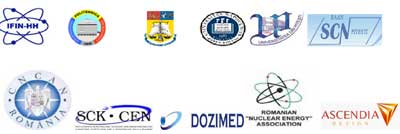
The project will address the topics of FP7 Euratom from nuclear engineering, radioactive waste, nuclear safety and new reactor concepts to radiological protection and medical applications of nuclear energy.
The project milestones are: The Proposal for a Romanian Nuclear Education and Training Strategy, a Methodology for Self - Evaluation Reports, Joint Pilot Course(s) and the establishment of RONEN.
RONEN’s main objectives are as follows:
• To evaluate the needs and current status of Romanian nuclear higher education and training and to coordinate joint efforts to establish a National Framework
• To define a national strategy proposal for nuclear E&T harmonised with EU requirements
• To enhance the learning technologies and courses for both online (e-learning) and onsite training
• To develop a knowledge database to efficiently exploit the project results and to disseminate the knowledge
• To perform the preparatory work (feasibility study) to set up a national network as a “mirror group” of the European Education and Training Network - (ENEN) and as a corporate adviser and support for the National Authorities and Beneficiaries
A communications and dissemination strategy will be established as part of the project, to spread the knowledge and to share the project results. A dedicated website www.ronen.ro has already been created and will be operational soon.
RONEN is designed to comply with ENEN and other European initiatives in the field of nuclear higher education and training, to implement EURATOM requirements and to harmonise the Romanian nuclear E&T system with the European methods and practices in order to assure its quality validation and recognition.
ENEN’s mission is to preserve and further develop expertise at the European level in the nuclear field through higher education and training. RONEN will have the same mission at national level.
RONEN will be part of the European system of nuclear higher education and training and will promote European nuclear E&T cooperation and integration.
The project partners are the most significant actors in Romania’s academic and nuclear research fields, together with important contributions to the development of nuclear E&T from the regulatory body, NGOs and SMEs, the first national consortium implementing ENEN rules and BNEN (represented by SCK*CEN).
All consortium members are committed to maintaining the development of the project as a sound basis for strengthening their E&T capability and will allocate their most qualified staff and equipment to help achieve the objectives of the project. This consortium represents the “core group” of the future entity to be developed. However, RONEN will be open to all eligible institutions which intend to join the consortium as part of a “users’ group”.
RONEN is also supported by the National Authority for Scientific Research (ANCS), the utility SN NUCLEARELECTRICA SA (SNN) and the Romanian Atomic Forum (ROMATOM), all of whom are potential beneficiaries of the project’s results.
The project will satisfy requirements regarding nuclear E&T expressed by the Nuclear Agency during the last "NucInfoDay 2009-Human Resources-the Key for Sustainable Development of Nuclear Energy" (see below)

http://www.euronuclear.org/e-news/e-news-28/rubio.htm

Obituary
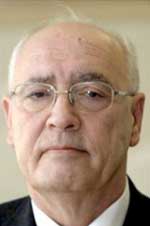 |
Dr. Juan Antonio Rubio, Director General of CIEMAT, the Spanish research centre for energy, environment and associated technologies, very sadly passed away on January 17th, following a courageous fight against a fatal disease over several months. He was a strongly committed and passionate scientist. He worked tirelessly up to the last, leading CIEMAT and contributing to the development of science and technology. Juan Antonio Rubio was one of the key Spanish figures in European Science and Technology. He was a man gifted with a rare combination of talents. He |
|---|
was always optimistic and endowed with a clear vision; a pioneer seeking out and exploring new scientific opportunities in many fields; a man never afraid to take on the many challenges posed by these opportunities. At the same time he was sufficiently pragmatic to find solutions to the real social, economic and political obstacles that allowed him to turn his dreams into successful projects. Amongst his many achievements he will be remembered as the man who led Spain to join CERN and, at the same time, consolidated the development of particle physics R&D in Spain. He also contributed greatly to the definition of the Spanish Fusion programme.
In more recent times he devoted much of his efforts to the development of a variety of different, sustainable energy sources, long before this became fashionable. In this context, he had a very balanced view of the importance of research on all sources of energy, concentrating in all cases on enhancing performance and minimising associated waste and environmental impact. He provided strong support to programmes aimed at developing advanced solar technologies and other renewable sources and he also initiated Spanish efforts in the field of carbon capture and storage aimed at minimising the impact of fossil fuel combustion.
Finally, Juan Antonio Rubio was deeply involved, both as a researcher and Director General of CIEMAT, in the development of concepts and technologies for the transmutation and reduction of nuclear wastes, acting as chairman of the governing board of the largest EU project in this field (EUROTRANS).
Deeply convinced as he was that any future European and global energy mix requires both renewable and nuclear energy sources, Juan Antonio Rubio made a strong and lively contribution to various fora devoted to these technologies. At the time of his death he was an active member of the Euratom Scientific and Technical Committee (STC), the governing board of Sustainable Nuclear Energy Technology Platform (SNETP), the European Energy Research Alliance (EERA), the Spanish Nuclear Society (SNE) and many others. He also personally played a key role in the Spain’s participation in several of the largest European demonstration projects in these fields, encouraging, as Director of CIEMAT, the participation of other Spanish companies and organisations.
Juan Antonio Rubio was also able to maintain his personal scientific activity at the same level of excellence, even during periods of more intense management duties. At the same time, he always paid attention to the social implications of scientific research. Thus, he always considered it a must to achieve the best possible return to society of any R&D investment, playing again a pioneering role both as director of the CERN Technology Transfer Division and as Director General of CIEMAT. In this context, he was particularly sensitive to the need to extend research opportunities to scientists in poorer countries and to use scientific collaboration as a bridge towards wider international cooperation. He devoted more than 15 years to strengthening scientific cooperation between Europe and his beloved Latin America. He was also particularly interested in exchanges between the Mediterranean countries, from both the north and south, and between Spain and her closer European neighbours.
Juan Antonio Rubio was a cultivated man and an avid reader, with a warm personality who took good care of those working closely with him. I was fortunate enough to spend more than twenty-five years working with or close to him and I will never forget his kind but firm character, his innate ability to lead his team, always filling them with hope, optimism and confidence in the ultimate success of all his enterprises. The scientific community has lost an inspiring figure and we, who were close to him, have lost a wonderful friend. For all of us Juan Antonio will be difficult to replace.
Enrique Gonzalez
Nuclear Fission Division of CIEMAT
http://www.euronuclear.org/e-news/e-news-28/bns.htm


On March 2, the Belgian Nuclear Society held its 2010 Conference entitled 60 Years of Nuclear Sciences in Belgium: Inspiring History, Exciting Future. It attracted more than 150 participants from many different sectors, including from industries and institutions, as well as the general public. The objective of the conference was to make Belgian nuclear expertise and activities better known and to show that the nuclear community in Belgium has achieved results that are outstanding for a small country and that it is active, attractive, growing and contributing to a sustainable future - especially in energy and healthcare.
The conference was opened by Professor Francis Delannay, Dean of the University of Louvain’s School of Engineering, who placed higher education within the context of the major challenges that mankind is facing today. He showed the importance of integrating nuclear education within wider societal challenges as a part of global solution, and also of adapting education in engineering to a changing world. |
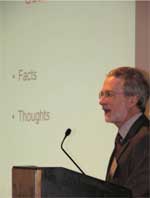 |
The first technical session addressed the very rich history of nuclear activities in Belgium over the past 60 years. Indeed, almost all facets of the peaceful use of nuclear science and technologies have been explored. In some cases it represented a first-of-a-kind application. This is illustrated in two books published by the BNS. The second session was dedicated to the nuclear sector as a driver of human activity in Belgium. Nuclear is indeed an important and growing sector of human activity, counting more than 8000 highly skilled direct jobs. A significant portion of these jobs is in research and innovation and regulatory control, as well as in the health sector. Several initiatives in the field of education and training were presented. The third session was devoted to research, safety, innovation and advanced applications. It addressed, for instance, the development of next generation reactors - with special emphasis on the MYRRHA facility - and healthcare applications. The latter is a sector in which Belgium plays a leading role and is still developing advanced healthcare and diagnostic techniques.
Finally, a very interesting and intense panel session took place, with participants from different horizons – economy, industry and communications – focusing on communicating science and technology to the general public. The panel highlighted the important challenge of communications and transparency.
The conference concluded with the celebration of 40 years of the BNS, which was founded in 1970 as a local section of ANS and became, in 1980, the Belgian Nuclear Society in its own right. It was then linked to the ENS, while at the same time continuing its links with ANS as one of its affiliated societies. This provided an opportunity to congratulate and thank many founding members and past-Chairmen who were invited to attend the celebration.
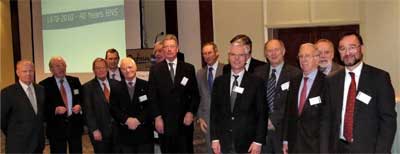
14 BNS chairmen attended the conference and celebrated the 40th anniversary of the BNS
Jean Van Vyve – BNS Past Chairman
http://www.euronuclear.org/e-news/e-news-28/atc.htm

By Pablo Zuloaga
ENRESA
Spain has eight power reactors in operation and two power reactors closed down and at different stages of decommissioning.
The Industry Commission of the Spanish Parliament unanimously recommended to the Government, in 2004, the development of a centralised storage facility for Spanish nuclear spent fuel (NSF) and high-level radioactive waste. Finally, the Government, which is responsible for the definition of radioactive waste management policy, stated in the 6th Radioactive Waste General Plan1 of 2006 that the construction of the Centralised Storage Facility (“ATC” in Spanish) was a priority.
In 2006, a Commission presided over by the Secretary of State for Energy was set up to define the criteria and to supervise the site selection process on a transparent, democratic and participative basis. In the same year an information campaign directed to all the municipalities in the country was carried out. This campaign included publicity in all the newspapers, publication of information on the web site of the Inter-ministerial Commission and the answering of questions from the municipal councils and general public, etc.
In December 20092, the Spanish Secretary of State for Energy launched a public call for candidate municipalities to host the “Centralised Interim Storage Facility” for nuclear spent fuel and high-level radioactive waste.
The planned facility is designed to receive and store for decades to come all the spent fuel resulting from Spanish nuclear power reactors (i.e. some 6,700 tonnes of heavy metal) and the high-level vitrified waste and long-lived intermediate-level waste generated from the reprocessing of Spanish fuel abroad. It will also receive and store intermediate-level radioactive waste from nuclear power plants being decommissioned (those with activity levels higher than the El Cabril LILW disposal facility acceptance criteria). This period of time is judged sufficient to allow for the technical and social developments that will help define strategies for longer-term management options.
ENRESA is the Spanish Inter-ministerial organisation responsible for radioactive waste and nuclear spent fuel management and for the decommissioning of nuclear installations. It supports the Commission by providing the required technical studies and information for the different stakeholders. It is also responsible for the design, construction and operation of such a facility and is, therefore, the implementer of the described policy. Furthermore, ENRESA carries out studies on long-term solutions and management options to assist the Government with its decision-making.
The project consists of three main elements (figure 1):
The Centralised Storage Facility itself,
A Technology Park and
A Business Park.
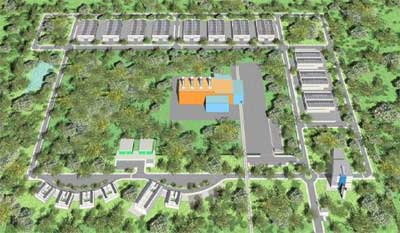
Figure 1: The ATC Technology Park and SNF & HLW Centralised Storage Facility
This threefold approach will assist local and regional development, stimulate business opportunities in the area, provide an opportunity to enhance Spanish research into how nuclear spent fuel and high-level waste behave and support further management decisions.
The total surface area of the park will be around 30 hectares.
The facility has been designed to meet the technical criteria of 10CFR723, with envelope site characteristics. Specifically it has been designed to:
Maintain sub-criticality
Maintain confinement of radioactive material
Ensure that radiation rates and doses for workers and public do not exceed acceptable levels and remain ALARA
Maintain retrievability
Provide for heat removal, as required, to meet the above-mentioned safety functions
Sub-criticality criteria are met through the geometrical arrangement inside the canisters. Confinement criteria are met thanks to a double confinement system. The NSF itself is not considered as a confinement barrier, the two barriers being the canister and the storage well. Radiation criteria are met thanks to 1.8 m thick walls. A natural through draft of fresh air provides the cooling, which maintains temperatures below acceptable levels. The structural design and siting criteria provide protection against natural or man-made risks.
The main parts of the Centralised Storage Facility (figure 2) are:
A reception area:
a process area for inspection of packages and encapsulation of NSF
Storage vaults
A storage module for intermediate-level waste
An auxiliary systems building
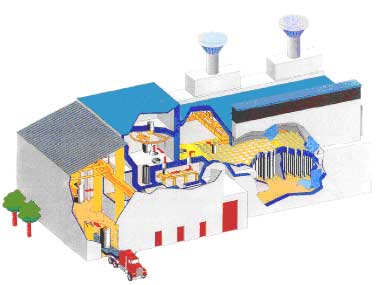
Figure 2: The conceptual design of ATC storage vaults
The technology selected for SNF and HLW storage is dry storage in canisters, placed in dry wells inside storage vaults. A cross-section and general layout of this facility can be seen in figures 3 and 4 below.
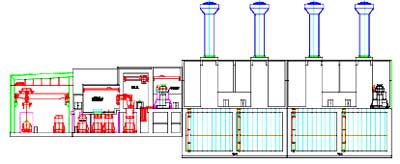
Figure 3: A cross section of the ATC facility’s main buildings
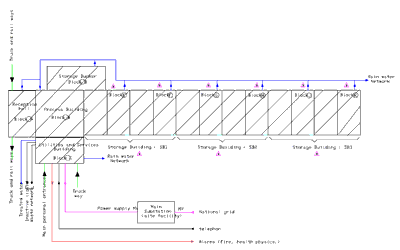
Figure 4: General Layout of ATC facility
In 2004, ENRESA presented a generic design of the ATC facility and its safety analysis report to the Safety Authority, the “Consejo de Seguridad Nuclear (CSN),” which judged the generic design “favourable4 “in June 2006.
The reception area is designed to receive transport by road or train, and for moving the transport casks to a vertical position and transferring them to the process area.
Inside the process area the opening of the transport casks, the connecting of the casks to the unloading cells and the unloading of the fuel assemblies or radioactive waste packages inside the two manipulation cells takes place. One of the unloading places is intended for encapsulated waste that does not need to be transferred to a canister. The second line is intended for spent fuel that needs to be placed inside a canister. Once a canister is filled with spent fuel, the lid is automatically welded, the vacuum is raised and the canister backfilled with helium before final sealing.
The canisters are then moved to the storage vaults. The canister with spent fuel or vitrified waste is placed inside the drywell, which is backfilled with nitrogen to have an inert environment around the canister, thereby allowing for potential helium leak detection from the canisters. Two spent fuel canisters or seven vitrified waste canisters can be stacked inside each drywell.
The drywell’s wall is a double one, providing a cooling air circulation path for residual heat extraction by natural draft, which is provided by 46m high stacks.
There will be twelve storage vaults, one of which will provide redundant storage capacity - if required given the long storage periods considered. One storage building houses four vaults. In this way there will be three storage buildings constructed sequentially, according to operational needs.
The facility is completed with a storage module or bunker providing room for medium activity waste coming from the reprocessing of fuel from the Vandellos I NPP. There is some internal debate about the need for an additional storage building or the convenience of being able to enlarge this storage module to accommodate larger amounts of intermediate activity waste (or low-level GTCC) from reactor decommissioning and to provide buffer storage for spent fuel casks - especially for those previously encapsulated in double-sealed canisters.
The building of a Technology Park is planned to complement the Centralised Storage Facility. Its main laboratory will be a research laboratory for spent fuel and high-level waste. It will have two nuclear laboratories, the spent fuel laboratory already mentioned, and a low-level waste laboratory. Their original basic design is under revision for integration into the Centralised Storage facility. This will make the transfer of radioactive material easier and enable the building and licensing of a single nuclear facility.
Other laboratories foreseen in the Technology Park are a materials behaviour laboratory, a chemical and environmental laboratory and a robotics and industrial pilot plant laboratory.
The project includes an industrial park that will offer synergetic support for the ATC facility and encourage regional development. This Business Park will have general offices providing services to new companies and a number of industrial buildings.
As mentioned in the introduction, the site selection is based on a voluntary procedure that was launched in December 2009. A number of local authorities, after receiving approval from their Municipal Councils, volunteered to host the ATC facility. The second step of the process was the analysis of the application of exclusion criteria defined in the call for candidates. These criteria related, mainly, to the protection of environmental and cultural heritage. A preliminary definition of areas where the proposed land for siting the ATC facility was deemed unsuitable was prepared and submitted as a conclusion to the analysis provided by each municipal territory. This excluded area definition was communicated to the candidate municipalities, other stakeholders and the general public, and a public consultation period started. The next step is the final definition of excluded areas and the submission by the candidate municipalities of a proposal of a suitable land site for the facility.
Meanwhile, regional and local site characteristics are being identified in order to contribute to the preliminary studies. These will support the Inter-ministerial Commission’s report that will present a proposed site to the Government.
Finally, characterisation of the selected site will start soon after the site selection process in order to support the adaptation of the generic design to fit the specific site and to assist with the preparation of the licensing documents.
The construction of a nuclear installation of this type will require5 two main licensing steps:
Construction authorisation (and a site authorisation that can be granted together with the construction authorisation) from the Ministry of Industry, Tourism an Commerce (MITC) after receipt of a binding report from the CSN and an Environmental Impact Statement by the Ministry of the Environment.
Operating authorisation granted by the MITC after receipt of a binding report from the CSN.
In addition, local authority urbanisation permits are also needed for the nuclear installation and for the conventional buildings of the Technology Park and Business Park.
1Sexto Plan General de Residuos radiactivos. Ministerio de Industra Turismo y Comercio. Junio 2006
2 Resolución de 23 de diciembre de 2009, de la Secretaría de Estado de Energía, por la que se efectúa la convocatoria pública para la selección de los municipios candidatos a albergar el emplazamiento del Almacén Temporal Centralizado de combustible nuclear gastado y residuos radiactivos de alta actividad (ATC) y su centro tecnológico asociado. BOE 29 de diciembre de 2009
3 USNRC 10CFR PART 72—licensing requirements for the independent storage of spent nuclear fuel, high-level radioactive waste, and reactor-related greater than class c waste
4 Acuerdo del Consejo de Seguridad Nuclear de 28 de junio de 2006, sobre apreciación favorable del diseño genérico de una instalación de almacenamiento temporal centralizado de combustible gastado y residuos de alta y media actividad
5 REAL DECRETO 1836/1999, de 3 de diciembre por el que se aprueba el Reglamento sobre Instalaciones Nucleares y Radiactivas, modificado por el Real Decreto 35/2008.
http://www.euronuclear.org/e-news/e-news-28/enusa.htm

Since it was founded in 1972, the history of Enusa Industrias Avanzadas has run parallel to that of the Spanish nuclear sector. As a public company whose objective is to provide products and services to Spanish nuclear power plants, Enusa has always needed to achieve excellence in order to compete with much larger companies and show the flexibility needed to equip itself with diverse technologies. The company’s evolution in relation to the fuel cycle can be divided into three major stages:
From 1972-1984, Enusa’s business was characterised by rapid development in line with the growth driven by the PEN (National Energy Plan) in the 1970s.
From 1984 to 1991, it consolidated its position as a fuel manufacturer with the start-up of operations at the Juzbado fuel factory in 1985, which supplies fuel to Spanish reactors.
Early in the 1990s, Enusa decided to expand abroad in order to position itself in the European fuel market and to make the most of its technological and manufacturing capabilities.
At present the so-called nuclear renaissance opens up new development opportunities to the sector’s companies and at the same time requires levels of quality and efficiency that are typical of consolidated companies.
The nuclear fuel market has its own particular characteristics that differentiate it from other markets. These characteristics are fully applicable to the European context in which Enusa primarily conducts its business. First of all, it is a fundamentally technology-based market since the fuel should be designed for the specific operating conditions of each reactor. Secondly, it is a continental market in which the fuel is supplied almost exclusively from facilities located in the same geographical location (continent). In this respect, it should be noted that, as opposed to the traditional tendency to contract fuel from the national supplier (in Western Europe there are nuclear fuel factories in France, Germany, United Kingdom, Spain and Sweden), in recent years we have seen a growing tendency to contract from non-national suppliers. This is a clear sign of maturity and also of another market characteristic – its highly competitive nature (both in terms of technology and prices) due to excess installed capacity. This means that the suppliers are continuously improving and optimising their designs and processes in order to meet market demands and to boost their competitiveness.
In addition to supplying fuel to seven of the eight Spanish reactors, Enusa currently supplies fuel to Finland, Sweden, Germany, Belgium and France. It has also supplied fuel to other European countries and to the United States. For example, in 2008 approximately 60% of the Juzbado factory’s production was destined for export.
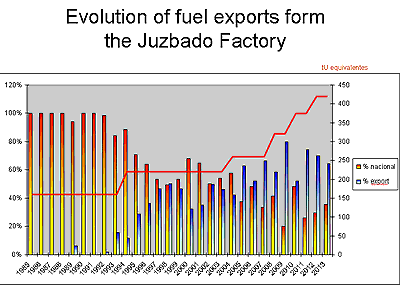
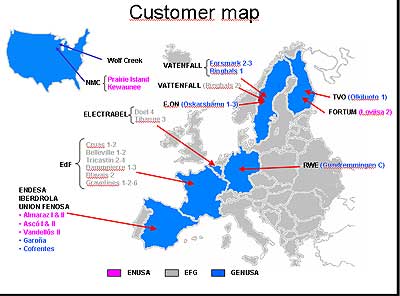
Enusa has achieved this international presence basically thanks to two partnerships. In 1991, it formed the European Fuel Group (EFG) with Westinghouse to market PWR fuel in European markets. Similarly, in 1996 it created GENUSA with General Electric for the purpose of marketing BWR fuel. EFG and GENUSA have been, and still are today, very effective tools for competing in the European market and strengthening the integration of Enusa and its American partners.
The core business of the company is nuclear fuel design, manufacture, services and marketing. The nuclear sector, more specifically the European market, is controlled by a very small number of players. In addition, Enusa’s competitors not only have capabilities in the front-end of the nuclear fuel cycle, but are also very vertically- integrated companies.1 They own the original technology of the nuclear power plants and, in some cases, are licensees of the technology used by Enusa. For this reason, the situation is complex. Because the market is very dynamic and is continuously consolidating it is also changeable.
The market for light water reactor fuel can be subdivided into two main categories: fuel for pressurised water reactors (PWR) and fuel for boiling water reactors (BWR). An analysis of the competition should, therefore, refer to each of these two technologies on a differentiated basis.
After the merger of Framatome ANP and Siemens in 2001, which gave rise to the Franco-German conglomerate AREVA, AREVA became the dominant player in Europe in terms of PWR technology. Its activities cover the whole nuclear fuel cycle and the company provides the technology for plants in France and Germany – the two leading European markets. The market conditions and the actions taken by Enusa in the early 1990s opened up the French market to competition, which allowed another major player to enter the European market, Westinghouse. Together with Westinghouse Enusa again gained a foothold through the EFG. This group is today the only technology alternative to AREVA in the area of PWR fuel in Europe and currently controls 25% of the market (with a clear upward trend in share control foreseen in the years to come).
Siemens has recently announced its intention to dispose of its percentage shareholding in AREVA and its participation in a new partnership with the Russian conglomerate ROSATOM. The consequences of this move will have a profound influence on the European market in the future.
The competitive scenario in the BWR market is more complex. Three suppliers dominate the European market. After the integration of the Swedish company ABB Atom in 2000, Westinghouse entered the BWR market. For historical reasons – Enusa’s BWR technology had come from General Electric since the 1970s – Enusa is also present in this market through GENUSA. The third player, AREVA, markets its BWR products thanks to the technology provided by Siemens. Since the BWR market is much smaller in size than the PWR market and since there are three technological options, the competition is very intense. GENUSA is well positioned in this contest and expects to cover a third of the market in the future.
Although the European market is a mature, highly-regulated market it continues to appeal to other companies from the sector that still do not have a foothold in it. The market itself accommodates new players because technological diversity favours competition both in terms of price and the technological capacity of the products. It would not be surprising if new suppliers were to emerge in the future, mainly from Eastern Europe and Asia. These would gradually penetrate the market thanks to their low labour costs.
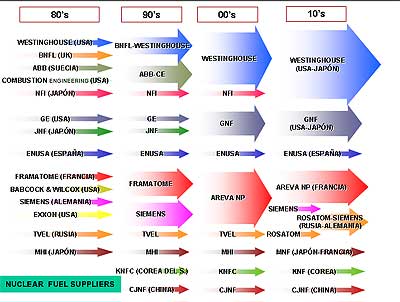
As mentioned before, Enusa’s competitors are vertically-integrated companies that are much larger and are in control of their own technological developments. Compared to these leading players, Enusa is a sort of rara avis because, until now, it has managed to remain on the sidelines of the above-mentioned consolidation processes.
Within this context, the relevant role that Enusa plays in the European market is remarkable. If we analyse the reasons that have contributed to its privileged position, we come to the following conclusions:
The presence of a supplier like Enusa adds competition to a mature market, such as the European one.
The proven ability of its engineers to undertake complex projects in the area of manufacturing and services adds indisputable value to the company and is recognised by the market.
The capacity to manufacture various fuel designs – PWR, BWR and VVER – in a single facility enables the company to cover practically the whole market.
Enusa has had the necessary flexibility to understand market demands and propose the best solutions. This is something that is highly regarded by the operators of nuclear power plants.
The policy of focusing on the customer, which it implemented some years ago and has extended to all levels of the organization, has yielded results and has become one of the company’s major assets.
If current conditions are maintained it is likely that the market will reward the presence of suppliers such as Enusa. Obviously it is the company’s responsibility to respond to this trust by upholding high standards of quality, reliability and safety, both in its operations and in the products and services it provides.
With a nuclear renaissance currently in progress Enusa is using partnerships to position itself in new emerging markets and thereby to expand and optimise its resources. The best example of this is the Spanish Nuclear Group for China, which is mentioned later in this report.
Highly-specialised companies such as Enusa usually promote their activities at trade shows and industrial conferences and by submitting articles to journals specific to their sector. Enusa takes part in both highly technical congresses and in other meetings with a broader focus. These events are usually held on a yearly basis.
Of note is the company’s participation in the most important conference on fuel cycle companies (Top Fuel), in the European Nuclear Conference (ENC) and in the Public Information Materials Exchange (PIME) meeting that focuses on external communications. Most of these conferences are held in Europe and the United States. Some are occasionally held in Spain, but even then the international presence is very relevant.
Enusa also takes part in trade shows in the emerging markets, where it has interests, e.g. in China, where it is present through the Spanish Nuclear Group for China (SNGC). Enusa attends the International Exhibition on Nuclear Power Industry and the Nuclear International Conference (NIC) trade show.
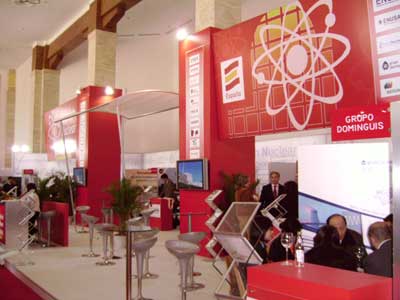
The company participates in these forums in several ways, from presenting technical papers to running exhibition stands.
In addition to tradeshows and conferences Enusa also submits work to certain sector publications such as Nuclear Engineering International, a world reference publication in the nuclear sector.
Enusa had an international business vocation from the start. It is a well-known fact that Spanish nuclear development received invaluable help from the nuclear powers of the day and especially from the United States. It is, therefore, not surprising that Enusa received the technology for the design and manufacture of nuclear fuel from Westinghouse and General Electric (thanks to license agreements it signed with each company in 1974 ) for pressurised water reactor fuel and boiling water reactor fuel, respectively. These partnerships provided the main technological foundations for Enusa and are one of its major assets. This fact indirectly helped to maintain the presence of the American nuclear fuel technology in Europe, in direct competition with other European manufacturers which, at that time, had a high degree of independence because they were autonomously developing the technology. They have, therefore, been a key to maintaining a highly competitive European market by enabling the operators of nuclear power plants to choose between several technology options. This is not easy in a mature, highly-regulated market with very close ties to local suppliers.
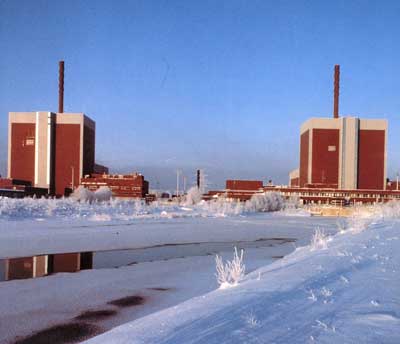
The technology agreements with Westinghouse and General Electric offered Enusa engineers their first opportunity to gain international experience through extensive periods of training in the United States. During this time, they acquired the basic know-how to develop the refueling design technology that would soon be implemented in Spain. In parallel, the construction project for the Juzbado (Salamanca) factory also involved trips by Enusa personnel to receive the training required to execute the project.
In 1988, Enusa, together with General Electric, won its first fuel supply contract for a non-Spanish power plant (Leibstadt, Switzerland). The workload of the Juzbado factory progressively switched from a supply exclusively destined for the national market to a supply with an increasingly relevant export volume. This explains why Enusa, together with its American partners, decided to implement a new commercial structure more suited to the new markets, a goal that was achieved with the constitution of the aforementioned EFG with Westinghouse and GENUSA with General Electric.
Entry into the European market meant that Enusa had to adapt to be able to operate within a framework of new regulations, new requirements and new regulatory authorities. The experience gained from this was very important for maintaining the company’s competitive potential in the future. An important accomplishment in this respect was the licensing of in-house design codes by European regulatory bodies.
Another relevant milestone, in 1991, was the company’s “internationalization” process which culminated in the signing of a Technological Cooperation Agreement with Mitsubishi Heavy Industries (MHI) of Japan. Thanks to the cooperation with MHI Enusa (and hence the Spanish nuclear market) was able to take part in the development of new fuel cladding materials. The cooperation involved working together on activities ranging from testing before manufacture to the hot cell testing of the materials after irradiation in power reactors, specifically at the Vandellós-II NPP (the High Burn-up Project) and the Almaraz NPP (Advanced Cladding Project). The leadership and the know-how gained from these development projects by Enusa’s Product Engineering Department proved very valuable, enabling the company to learn state-of-the-art of fuel pellet and rod designs and understand their operational performance under highly demanding irradiation conditions.
Research, Development and Innovation (R&D&I) is one of the areas in which Enusa has focused its investments. It currently accounts for more than 6% of its annual fuel sales. R&D&I plays a role in a multitude of international programs such as HALDEN, NFIR, ROBUST Fuel, CABRI and ALPS, and it is also a shareholder in the Jules Horowitz (JHR) research reactor project in France. Also of note is the close collaboration in research projects of Enusa’s Engineering Department with the Electric Power Research Institute (EPRI).
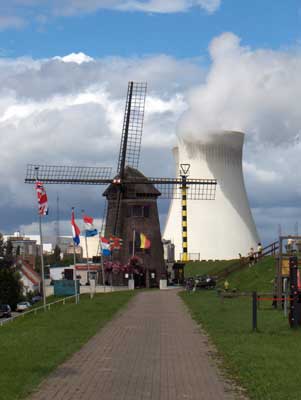
Starting with the basic know-how obtained during the first phase of development, these capabilities have been consolidated and enriched as the company participates in new fuel supply projects and new R&D&I projects. The Enusa Engineering department became a recognised resource that was highly regarded by its customers and partners, and it progressively received more ambitious requests for collaboration. For example, Enusa technicians participated in the development of the Westinghouse reactor AP600, advanced safety assessment methodologies and the General Electric reactor ESBWR licensing process. At present, the Core Engineering department is carrying out safety assessment studies for American power plants commissioned by its partners. These studies will prove useful for purposes such as plant power uprates and modifications in the operating strategies, both of which must be audited and approved by the Nuclear Regulatory Commission (NRC).
As indicated above, the last phase of this internationalisation process is linked to the nuclear renaissance and is a direct consequence of the need for cooperation among sector companies. This has led to the creation of the Spanish Nuclear Group for China (SNGC), incorporated in 2008 thanks to shareholdings by the following Spanish companies: Equipos Nucleares (ENSA), which belongs to SEPI; the nuclear services firm TECNATOM; RINGO Válvulas and Enusa Industrias Avanzadas, S.A. This budding enterprise is in the midst of an ambitious development plan in China and has already signed the first collaboration agreements with a Chinese nuclear fuel manufacturer and with other engineering and manufacturing firms in that country. 2010 should see these projects bear fruit and consolidate SNGC as an alternative goods and services supplier. It should also see support given to the challenge of how to increase the capacity of the Chinese nuclear fleet from its current 11 GWe to 70 GWe of installed nuclear capacity by 2020.
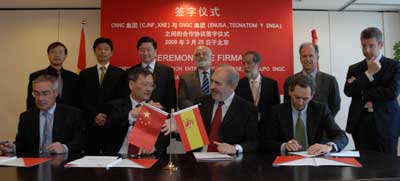
Also in Asia, South Korea is a country with one of the most highly- developed nuclear industries outside of Japan. The Korean fuel manufacturer, Korean Nuclear Fuel (KNF), and Enusa have developed their relations over the years and collaborated in fuel performance-related activities. In 2009, relations were strengthened with the signature of a collaborative agreement that covers new areas of cooperation between the two companies.
It should also be noted that fuel and equipment transport services are provided by Express Truck, S.A. (ETSA), a subsidiary of Enusa that has considerable experience as an international multi-modal carrier. ETSA has also begun to expand internationally with the establishment in Romania of its subsidiary ETSA Doi. In this way it aims to develop a business model in Eastern Europe similar to the Spanish one. It also aims to position itself in the European market as a leading operator for International Carriage of Dangerous Goods by Road (ADR) by having service platforms at both ends of the continent.
1 These are companies with a presence in both the front-end and back-end of the nuclear fuel cycle.
http://www.euronuclear.org/e-news/e-news-28/sck-cen.htm

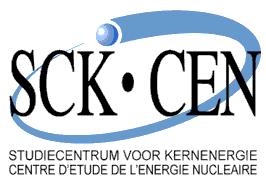
The Belgian Reactor 2, or “BR2,” which is operated by the Belgian Nuclear Research Centre, SCK•CEN, in Mol, became operational in 1961. It is a100 MWth high-flux materials testing reactor and one of the most powerful research reactors in the world. BR2 is operated within the framework of programmes aimed at promoting the development of structural materials and nuclear fuels for fission and fusion reactors.
Together with four other reactors BR2 is responsible for the production of 90% of the radioisotopes that are used worldwide as part of nuclear medicine’s diagnostic and treatment capability. The BR2-reactor is also a major supplier worldwide of isotopes for use in industry and of Neutron Transmutation Doped (NTD) silicon. BR2's present annual operating regime is based on six irradiation cycles, i.e. 140 operating days per year. The reactor uses 93 % 235U-enriched uranium as fuel and is moderated by light water and beryllium. A serious effort has also been made to perform the above-mentioned commercial activities in accordance with a 'Quality System' that has been certified to the requirements of the "EN ISO 9001:2000".
The availability of thermal neutron fluxes up to 1015n/cm²s allows an important routine production of radioisotopes characterised by highly specific activities for medical and industrial applications. A standard irradiation cycle consists of 3 or 4 weeks operation at an operating power between 55 and 70 MWth, depending on the core configuration, which is easily adapted to the experimental load.
The targets for the production of radioisotopes are supplied by the customers and loaded into suitable irradiation capsules. After commissioning tests, the capsules are loaded and irradiated in dedicated devices. Some of them allow their loading and unloading during the operation of the reactor. After irradiation, temporary storage for cooling and, if required, passage through the BR2 hot-cells for decanning (recovering of the target material from the irradiation capsules), the targets are loaded into suitable shipping containers and returned to the customers for processing.
The major isotope produced in the BR2-reactor is 99Mo (half-life time T1/2 = 66 h). It is obtained by the irradiation of highly-enriched uranium targets (93% 235U) of 4-5 g 235U. Six irradiation devices are routinely loaded in reflector channels, providing a total irradiation capacity of 75 targets at the same time. A typical irradiation of 150 h in a thermal neutron flux of 2.5 x 1014 n/cm²s yields up to 1000 Ci of 99Mo per target following irradiation.
In their processing facilities customers recover the 99Mo activity in order to manufacture 99Mo/99mTc (T1/2 = 6 h) generators, the most important diagnostic tool in nuclear medicine. Other fission isotopes produced are 131I (T1/2 = 8.02 days) for thyroid cancer therapy and 133Xe (T1/2 = 5.24 days) for diagnostic imaging of the lung function. The production of 192Ir (T1/2 = 74 days) for industrial applications (mainly testing of welds) consists of the irradiation of iridium discs in the six peripheral channels of the central beryllium plug H1 of the reactor, characterised by thermal neutron fluxes of up to 1015n/cm²s.
Five nuclear reactors produce most of the worldwide supply of Molybdenum-99, from which Technetium-99m is derived. These are HFR (Petten; the Netherlands), BR2 (Mol; Belgium), OSIRIS (Saclay; France), NRU (Chalk River; Canada) and SAFARI-1 (Pelindaba; South Africa).
Certain circumstances have lead to a temporary shutdown of the Dutch reactor in Petten for 6 months, which started in February 2010. The Canadian reactor was also stopped in May 2009 and is scheduled to restart in July 2010. This affects the worldwide supply of, for example, Tc-99m, the most used isotope in nuclear medicine. So, SCK•CEN has decided to increase the production in the BR2-reactor in agreement with the other European partners who process the isotopes. With this substantial increase, BR2's averaged yearly 99Mo production capacity will raise from 15% up to 25% of the world demand.
In a European context SCK•CEN is developing MYRRHA (Multi-purpose hYbrid Research Reactor for High-tech Applications), a multi-functional experimental irradiation facility. MYRRHA is the world’s first prototype of a nuclear reactor that is driven by a particle accelerator. This method is called Accelerator Driven System or ADS - a very safe and controllable nuclear technology. The MYRRHA project started in 1997 and it aims to become fully operational around 2023. In time MYRRHA will, therefore, replace the BR2-reactor for the production of radioisotopes and for various research programmes. The system will guarantee services to, and the training of, a new generation of scientists and engineers. This new project also contributes to research into reactor safety, to the development of fusion technology and to fundamental research in various fields of science. The Belgian Federal Government recently agreed to support the MYRRHA project by allocating 60 M € for a detailed elaboration of the construction of this important Large Scale Research Infrastructure.
This symposium on medical radioisotopes aims:
To encourage information exchange about existing bottlenecks and/or potential shortages in the service to the public: factors which endanger the security of supply of medical radioisotopes, inadequate harmonisation of transport regulations, insurance costs, and problems related to the transport safety management
To present new ideas and initiatives to overcome these bottlenecks and/or potential shortages
To formulate recommendations in the above areas
For more information see www.sckcen.be/en/Events/SYM_MRI3
The third symposium focuses on the security of medical radioisotopes production and supply. This includes technical, legal, financial and safety issues relating to the transport of these radioisotopes. It is intended for European and Belgian health authorities, regulators, transportation companies, radioisotopes producers and users. The interest of the potential participants will be stimulated by the presentation of some practical recommendations that will be discussed during the symposium.
The symposium is organized by SCK•CEN, ISI, IRE, IBA, EITA and BNS.
Auditorium of the Royal Military School
KMS-ERM
Avenue Renaissance 30
BE-1000 BRUSSELS
(Entrance via Rue Hobbema 8)
Parking: Esplanade Jubelpark/ Parc du Cinquantenaire
www.rma.ac.be
For more information on the production of radioisotopes in the BR2 reactor, please contact
Bernard PONSARD
Project Manager "Radioisotopes & NTD Silicon"
SCK•CEN – BR2 Reactor
Boeretang 200
B-2400 Mol, Belgium
Tel: +32 14 33 24 30 -
Fax: +32 14 32 05 13
E-mail: bponsard@sckcen.be
http://www.euronuclear.org/e-news/e-news-28/SNE-news.htm

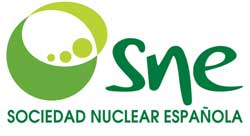
The Spanish Nuclear Society is undergoing a process of corporate image change that has been reflected initially by a change of logo (see above). It is also redesigning the Annual Meeting website, which is being tested. Its own website is similarly being tested and will be available soon.
The SNE has organised, as it does every year, the winter conference entitled: Nuclear Power Plants in 2009: Experiences and Prospects, in which executives of power companies, electricity producers, suppliers and representatives of Spanish plants analyse relevant aspects of the operation of nuclear plants over the past year (2009). While the economy is determined by the manner in which resources and energies are managed, energy, on the other hand, can develop projects and the results of that work can change the world. This year's special session will be devoted to analysis of the relationship between economics and energy, with a special focus on current economic conditions and energy.
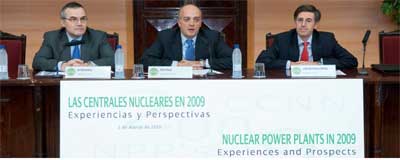

The SNE Ordinary General Assembly took place at the end of this session and two new members were nominated to the governing board. They are Luis Enrique Herranz, from Ciemat, and Miguel Angel Cortes from Nuclenor (Santa María de Garoña).
The SNE and the ICAI University, thanks to the Rafael Mariño Chair, has organised a nuclear symposium intended principally for professionals, academics and senior students studying engineering or science who are interested in having an updated view of the nuclear power sector.
The key aspects of this technology will be reviewed in a roundtable format, with the aim of showing the nuclear sector’s current state, developments, trends and prospects. The goal is to provide objective and rigorous information about the sector. This is an annual event. This year it was devoted to 2010: Nuclear fuel cycle: from the mine to the future. It involved the participation of Lourdes Guzman (ENUSA), with a presentation entitled: The first part of the cycle: from mining to reactor; of Juan Enrique Martínez Abad (ENRESA) with his paper on: The second part of the cycle: the spent fuel as waste and Enrique Gonzalez (CIEMAT), who spoke about: Other sequels: spent fuel as a resource.
The 36th Annual Meeting of the Spanish Nuclear Society (SNE) will be held in Santiago de Compostela from 6 - 8 October 2010.
The technical committee has started a call for contributins for papers that will finished on 30 April. The abstracts and papers will be sent to ponencias@sne.es, indicating the subject the topic selected. The final paper must be submitted before 30 June. Special mentions will be given to selected papers receiving a diploma during the closing session. Thematic areas, rules for presentation and other information may be obtained from the meeting web site at www.reunionanualsne.es

The meeting programme includes plenary and technical sessions. The Plenary sessions include Opening, Closing and Special sessions, in which important current issues will be discussed. This year special sessions will focus on Energy and the electric vehicle and The Spanish Centralized Temporary Storage Facility.
The technical sessions will take place over the three days of the Annual Meeting and will be grouped by topic. During these sessions nuclear professionals from Spain and other countries will outline their latest developments. The technical topics in the 36th Annual Meeting are the following: fuel, communications, dismantling, fusion, R+D, engineering, maintenance, nuclear medicine, new reactors, NPP operation, management and human factors, other applications of nuclear technology, radiological and environmental protection, nuclear waste and nuclear safety.
The Monograph Sessions are devoted to specific topics and bring together specialists from all over the world. The programmed topics are:
The Sustainable Nuclear Energy Technology Platform (SNETP)
CERN: Scientific and technological development
Advertising Nuclear Energy: Why not in Spain?
Latin American Nuclear Programmes.

The technical programme finishes with courses offered as part of a package entitled Learn more about that. Each course focuses in a very practical way on a topic of singular interest. This year the courses are:
The liberalization of the gas and electricity market in Spain
Chernobyl: Nuclear Youth’s (JJNN) experience following its visit to the reactor
The management of design modifications in a nuclear power plant
The Galicia Conference and Exhibition Center in Santiago de Compostela will be the venue for the Annual Meeting. The center will also host the trade show, where the latest, most innovative projects, products and services related to the applications of nuclear power will be on display. It will be a unique opportunity for sector professionals to present their companies.
Stand reservation is open to Spanish and foreign companies and can be done via email to: stands@sne.es
This periodic encounter of the industry, companies and high representatives of the national and international nuclear and electric energy sector also provides an interesting opportunity to learn about and enjoy the culture, landscape or gastronomy of the different Spanish regions. Therefore, it was considered that Compostela Holy Year (Holy Jacobean Year or Xacobeo 2010) would be a great incentive for the numerous attendees -around 500 delegates and 150 companions – that are expected to be there. It also provides an excellent chance to get to know the Community of Galicia at this special and unique time, given that next Holy Jacobean Year will not be until the year 2021.

http://www.euronuclear.org/e-news/e-news-28/nuclear-power.htm

Nuclear power represents the first time in the history of mankind that heat had been generated, without the use of fire, to produce electricity. Sun, wind and marine energy is also helping to generate electricity without releasing carbon dioxide into the atmosphere. The latest information and communications technology connected with modern power electronics control today’s and tomorrows’ smart grids in order to assist in the optimizing of these resources for the benefit of consumers. Nuclear power stands for stability while the use of fossil fuels is limited only to compensating for the fluctuating availability of wind, sun and marine energy. In past winters, during the coldest days, coal fired plants had to be started up to keep the Nordic grid running in equilibrium because of the lack of wind.
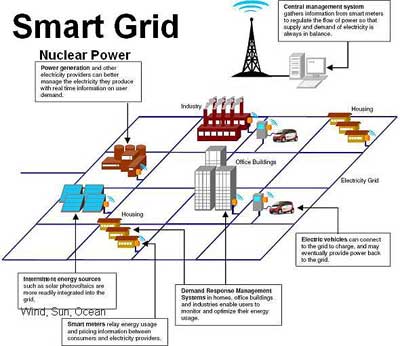
The European consumers’ standardisation organization ANEC, www.anec.eu/anec.asp ensures that peoples’ interests are safeguarded in all European standardization activities. Among the resources used are the IEC Global Standards for Smart Grids www.iec.ch/zone/smartgrid/ and the CENELEC www.cenelec.eu standards.
Frigyes Reisch(*)
KTH, Royal Institute of Technology, Stockholm, Sweden
(*)Frigyes is also the ANEC member on the Steering Committee for Smart Grids and Smart Meters (DG Energy, EC) and a member of the IEC Technical Committee for Nuclear Instrumentation
http://www.euronuclear.org/e-news/e-news-28/finnish-society.htm

The Finnish Nuclear Society (ATS) organised its annual meeting on 3 March 2010, in Tieteiden Talo, Helsinki. Altogether 55 members of ATS participated in the meeting. During the meeting Dr. Eija-Karita Puska from VTT was nominated to the position of Chairwoman of the Society for the second year running. Veijo Ryhänen from TVO was nominated as Vice Chairman. The new Secretary of ATS is Dr. Silja Holopainen from VTT and the new Treasurer is Risto Vanhanen, from Aalto University. Timo Seppälä from Posiva replaces Yrjö Hytönen from STUK on the ATS board.
In addition to these official procedural matters, two presentations were given during the meeting. Stefan Forss from the National Defence University spoke about the nuclear energy situation in Iran. Juhani Santaholma clarified the reasoning behind the “decision- in-principle” process and explained the meaning of the term "overall good of society." These are both part of the process for obtaining a license to build a new nuclear power plant unit in Finland.
The presentations are available on the internet in the archives of ATS www.ats-fns.fi/info/arkisto.html.
ATS recently organised a two-day visit to Vaasa, where the members met representatives from the local energy industry. The host of the visit was Wärtsilä, and the meeting was arranged in co-operation with the regional entrepreneurs’ organisation, RPY. Altogether 10 ATS members and 4 members of FinNuclear participated in the visit.
http://www.euronuclear.org/e-news/e-news-28/Westinghouse.htm

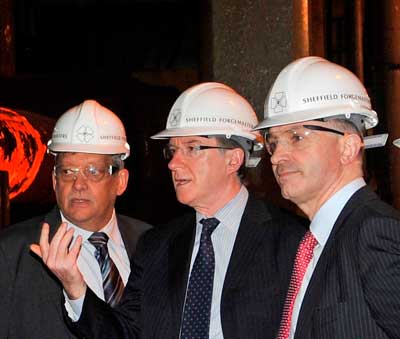
Westinghouse, a Corporate Member of ENS, continues to seek ways of strengthening its position in the UK nuclear market. Two news stories broke in recent weeks that emphasised the company’s intention to become a major player in the UK’s nuclear manufacturing and supply chain. Here is a link to two press releases that describe in detail how Westinghouse is investing heavily in the UK and hoping to play a major the nuclear new build process:
www.ukap1000application.com/news_and_media_information.aspx

http://www.euronuclear.org/e-news/e-news-28/ygn-reporter.htm


For the first time the annual Research Reactor Fuel Management (RRFM) conference took place outside of Europe, in Marrakech, Morocco, from 21 – 25 March 2010. It was organised by the European Nuclear Society (www.euronuclear.org) in cooperation with the International Atomic Energy Agency (www.iaea.org) and CNESTEN (www.cnesten.org.ma), which as this year’s host organisation presented it’s achievement of starting up Morocco’s first ever research reactor. About 200 participants from 30 countries working in the fields of research reactor operation and fuel management used the opportunity to present their work, exchange ideas and make contacts.
As the title of the conference implies, the focus was on fuel management and the development of HEU to LEU nuclear fuel conversion in accordance with US threat reduction and spent nuclear fuel acceptance programmes. The aim of RRFM in general is to provide a forum for personal discussions between research reactor operators and relevant US programme managers, as well to improve cooperation and the exchange of ideas within the research reactor community. Thematically, the programme this year was divided into 6 sessions: International Programmes, Nuclear Fuel Cycle, Utilisation of Research Reactors, Innovative Methods in Research Reactor Analysis and Design, Research Reactor Operation, Maintenance and Ageing and New Research Reactor Projects. Overall, the largest one was, of course, Nuclear Fuel Cycle, which featured the development of the Mo based fuel that is needed for the conversion of high power research reactors (and for which significant research still needs to be carried out). This was followed by status reports and the highlighting throughout the conference of plans relating to HEU to LEU conversion.
Additional hot topics under discussion at RRFM 2010 were: options for future Mo-99 production, improving the utilisation of research reactors and reactor ageing and maintenance. Several presentations were devoted to new research reactor projects in various stages of planning and construction, like PALLAS and JHR. Due to the tight schedule, which included 68 oral presentations and a poster session with 28 participants in two and a half days, several sessions had to take place in parallel on 23 March. After the RRFM 2010 closing session several meetings not related to the conference took place in order for, people to capitalise on the fact that so many interested parties were gathered together in Marrakech. These included a TRIGA users meeting. After the conference a technical visit to the Moroccan Nuclear Research Centre near Rabat took place. Unfortunately, I could not attend but colleagues told me that in spite of the long journey to get there it was well worth the visit. With the new TRIGA Mark II reactor the role of the Centre is bound to increase both as a research facility and in preparation for a possible future deployment of nuclear energy in Morocco.
The conference’s social programme was a packed one too, starting with welcome drinks after the pre-registration on the eve of the conference, followed by the AREVA – CEA sponsored Moroccan-style dinner the following day and finishing with the conference dinner. Together with the excellent catering offered during the coffee breaks and lunches, this made for a very pleasant and relaxing atmosphere in which to discuss the day’s work and to meet new people. For me personally the conference was very helpful in providing an overview over the international relations of the research reactor community and for offering very good networking opportunities because most of the European research reactors, and quite a few from all over the world, had representatives at the meetings. I would like to thank ENS staff for their great organisation of the conference and I am looking forward to next year’s RRFM, in Rome.
Thomas Stummer
TU Vienna - Atominstitut
Austria
http://www.euronuclear.org/e-news/e-news-28/czech.htm

If you had been at the Nuclear Research Institute (NRI) at Rez, close to Prague, Czech Republic, on 8 January this year you would not have noticed anything special about the day – except perhaps for the heavy snow that had hit Rez a few days earlier and was continuously covering in the whole area in a thick white coat. For most of the NRI personnel it was just an average Friday, but not for the staff operating the LVR-15 research reactor. After fifty years of full-power operation a woman was sitting behind the reactor’s control desk for the first time. On 24 November 2009, Marija Miletić passed the theoretical exams for reactor operators set by the Czech State Examination Committee and received approval to start an eight-weeks practical training course. As a part of her practical training with the LVR-15 research reactor, Marija started with control rod removal at 1:45 PM. The reactor then reached criticality at 2:06 PM and full power of 9.5 MW was achieved at 2:19 PM. Her actions were supervised by the Chief of Reactor Operation, Vladimír Brož, by the Shift Supervisor, Jaroslav Tichý, and by Senior Operator, Petr Šikner.
In their professional opinion the supervisory team could not remember the LVR-15 reactor ever having experienced such a calm or smooth start-up. This important research facility undoubtedly appreciated Marija’s studied and expert touch. Marija's education had given her the best possible qualifications for the correct and competent operation of a nuclear reactor. However, at the moment they only apply to research reactors. In June 2009, she graduated in “Theory and Technology of Nuclear Reactors in the field of Nuclear Engineering” from the Department of Nuclear Reactors, Faculty of Nuclear Sciences and Physical Engineering, of the Czech Technical University, in Prague. In October 2009, she began her PhD studies in this department, focusing on nuclear energy development in Serbia and on a possible cooperation with the Czech Republic in the nuclear industry sector.
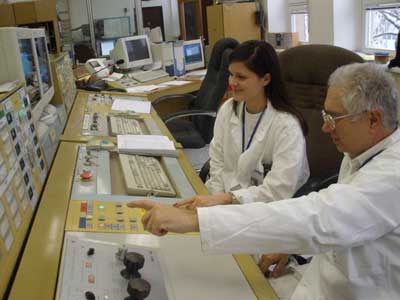
She has also acquired broad experience with LVR-15 research reactors’ experimental devices, where she became one of the first female reactor loops operator in last decade. She was later appointed the first woman candidate to operate a reactor. Although Marija has become the first woman nuclear reactor operator in the Czech Republic, she was not the first woman in the country to sit behind a control desk at a commercial nuclear facility. That distinction goes to two female operators at the Dukovany and Temelin NPPs. However, of late mostly men have been operating the country’s six VVER reactors (two at Temelin and four at Dukovany).
But Marija is not just the first female LVR-15 operator ever - as a Serb she has also proved that the Czech nuclear community is open and willing to support all talented and clever young people, regardless of their nationality. We can only hope that more successful young professionals like Marija will come and join the Czech nuclear industry.
Ondrej Zlamal
Young Generation of Czech Nuclear Society
http://www.euronuclear.org/e-news/e-news-28/spain.htm

Nuclear energy issues are again the subject of controversy in Spain. In the past few months the Government's decision to authorise the construction of an interim storage facility for high-level radioactive waste has divided the country and has raised many concerns.
For the time being Spain does not have such a facility and most of its nuclear power operating plants' high-level waste and spent fuel are kept at the plants, apart from a small fraction that was sent temporally to the UK and France for reprocessing.
The Centralized Interim Storage Facility (Almacen Temporal Centralizado - most commonly known as ATC) is directly inspired by the experiences of the Dutch. A central building divided into different modules will be constructed to store high-level radioactive waste arising from all Spanish nuclear power plants' activities. Some additional radiotoxic substances that cannot be processed at El Cabril (where low and intermediate level radioactive waste is being handled) will also be stored in this new facility.
The estimated amount of radioactive waste to be stored is around 6,700 tons and it would require a facility with a capacity volume equivalent to a 4 meters high basketball court to store it. The construction project should take about 14 years, including the design period, its approval and the construction of the different modules. The first module should be completed at the end of the fifth project development year. The Spanish Government plans to develop, in the same area where the ATC should be built, a nuclear waste research facility.
The decision to build the ATC has made nuclear energy once again catch the public’s eye as the Government has begun a period of time during which any Spanish municipality can present its bid to host the project. This has brought a lot of political debate within each candidate town. Indeed, hosting such a facility would, on the one hand, bring employment opportunities and a stable source of revenue for the local community. On the other hand, some claim that such a facility would entail a risk for the population and that tourism and visitors would be discouraged to visit the chosen municipality and its surroundings.
The Spanish Government is due to take a decision in the weeks to come. In the meantime, protests have arisen in the 8 towns that have applied for the storage facility to be built in their municipality. The populations are split between those in favor and those against.
The Spanish Young Generation Network, “Jóvenes Nucleares”, consider that it is necessary to provide citizens with valuable information, including facts on other similar experiences around the world, and to point out that this type of facility is safe and does not entail any risk either for the host municipality or its population.
From our perspective, nuclear energy must be produced in a responsible manner and must contribute to sustainable development. In other words, there should be an open cycle from the mining and conversion of raw uranium to the disposal, storage, processing and isolation of radioactive waste. It is the duty of society to complete the whole cycle in a proper, safe, serious and responsible way and that includes dealing with waste. Advanced research is being carried out on the possibility that in the near future this waste will be able to be reprocessed and used again as fuel for new generation reactors.
Spanish Young Generation Network.
“Jóvenes Nucleares”
http://www.euronuclear.org/e-news/e-news-28/abu-dhabi.htm

The International Conference on Human Resource Development for Introducing and Expanding Nuclear Power Programmes took place in Abu Dhabi, UAE, from 14 -18 March 2010. The conference was organised by the International Atomic Energy Agency (IAEA) in cooperation with relevant international nuclear institutions and was hosted by the Government of United Arab Emirates.
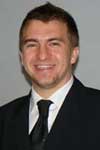 |
Development of human resources is high on the agenda and is relevant for all nuclear stakeholders, both for nuclear newcomers and also countries that have decided to expand their existing nuclear energy programme. Today this is recognised on a European level, and lots of activities have already taken place. |
|---|
One approach is the European Commission’s ENEF initiative. On the other hand, the nuclear industry itself is more and more focused on the importance of education, in-house training, as well as establishing and supporting educational programmes (e.g. ENEN, ENELA etc).
More than 300 participants from all over the world came to present their vision and strategies for human resources development and to discuss under one roof. The conference included keynote speakers’ presentations followed by interactive presentations from other participants.
In a video message, IAEA Director General, Yukiya Amano, said: “I am grateful to the Government of the United Arab Emirates for hosting this important event. The world is witnessing a resurgence of interest in the nuclear power and we at the IAEA want to do all we can to help member states address the issue of human resource development.”
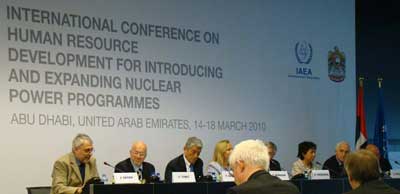
Opening Plenary of the IAEA conference in Abu Dhabi, 14 - 18 March 2010
The conference began with welcoming and introductory remarks from the Government of the UAE and the IAEA Deputy Director General for Nuclear Energy on the importance and timeliness for such a meeting in light of the large number of countries that have officially expressed interest in pursuing a peaceful and transparent nuclear power programme (including the recent announcement of a partner for one such newcomer country (the UAE). The keynote speakers then provided their insight into the current status and challenges of HR for the nuclear industry and how they see the role of the key stakeholders – government, industry and academia – in providing the necessary support for developing and maintaining the human resources needed for the safe and sustainable introduction and expansion of nuclear power programmes, and the need for a global effort in this regard. The presentations addressed the key objectives of the conference, thereby setting the stage for the subsequent presentations to delegates.
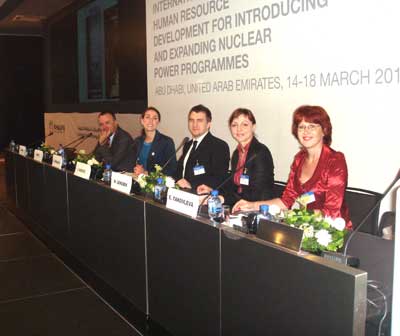
The Young Generation was invited to take a lead in the session entitled: Making the nuclear field attractive to the next generation and, on behalf of ENS YGN, I had a great opportunity to co-chair and make a keynote speech. So too did my colleague Leah Spradley of the USA’s Nuclear Regulatory Commission (NRC). The speakers in this session came from the generation that will provide future leadership in the field of nuclear power. We provided our views on the challenges and opportunities that the nuclear sector will encounter to make itself attractive to future generations - both future employees and those who will be key stakeholders such as teachers and faculties in higher education institutes, government decision-makers and the leaders in local communities close to nuclear facilities.
In my presentation the main HR challenges and opportunities were emphasised from four different perspectives:
youngsters working in academia and educational/research institutes
university, research and training institutes themselves
young professionals working in the industry
the industry
For interested readers all speakers’ presentations are available at the IAEA website at:
www.iaea.org/inisnkm/nkm/pages/2010/conference_UAE_March_2010.htm
Dr. Igor Vuković, University of Zagreb – FER, Croatia
ENS Programme Committee member and ENS YGN Past Chairman
http://www.euronuclear.org/e-news/e-news-28/nucnet-interview.htm

 |
After a long and distinguished career in the nuclear sector, most notably at the Dutch Nuclear Research and Consultancy Group (NRG), André Versteegh has retired. However, André, who is well-known to many readers, remains very active in the nuclear world. He is currently President of NucNet. In this interview André stresses the importance of good communications to the future prosperity of the nuclear research community and gives his personal view of what the future holds. |
|---|
ENS NEWS would like to thank NucNet for allowing its readers to listen to what André has to say:
Comment & People
Andre Versteegh, former director of the Nuclear Research and Consultancy Group (NRG: www.nrg.eu) and current president of NucNet, talks about the importance of transparency in the nuclear industry and the significance of the planned new Pallas research reactor at Petten in the Netherlands.
NucNet – How do you assess the importance of good communications within the civil nuclear industry, and how important will this become in the future?
Versteegh – It is essential. Of course in the past it was always important, but even more so in the future with the nuclear renaissance. It is clear there is a renaissance going on, so we have to be careful with our communication… It is vital that there are no miscommunications on safety and security issues in the nuclear industry.
NucNet – Do you feel this has been neglected in the past? Was communications not given sufficient attention by the nuclear industry or by utilities?
Versteegh – This was one of the reasons NucNet was founded 20 years ago. The nuclear industry was a closed community more or less. One was afraid to talk about it… when something happened, the public wasn’t told exactly what went wrong and what the consequences were, if there were any. The nuclear industry had a bad image and we are still suffering from that. It takes a long time to win trust from the public, and this can in turn be lost very, very quickly. This was one of the reasons NucNet was established.
At that time, when something happened in a nuclear power plant, both domestically and internationally, the media would start to ask questions immediately. If an incident occurs in a nuclear power plant, we need open, accurate and reliable answers straight away. We need this to prevent misinformation being circulated, misinformation which will be harmful to the industry. Then came the idea to have a network of reliable informants and correspondents around the world… to prevent miscommunications around the world, and it has worked very well.
NucNet – The public can also consult an industry-specific service such as NucNet. To what extent has the public benefitted from the service?
Versteegh – In the beginning, the idea was for NucNet to be an association of nuclear correspondents and nuclear communication professionals who maintained a fast and reliable flow of information. They would be able to respond to questions or incidents in their own countries, and the information is reliable because it has been fully checked and verified. Then answers can be given to the public. That was the original idea. But incidents don’t happen every day, so NucNet started to provide additional, normal news, 24 hours a day and only with reliable, verified information. The advantage of NucNet was and always will be that the information is reliable, because on the internet the information is sometimes far from reliable.
NucNet – After Chernobyl and Three Mile Island, was there a great deal of resistance within the industry to becoming more open?
Versteegh – The industry was afraid that in reporting a small incident, there would be enormous criticism in the media. They thought it would be better not to say anything, and then there would be no risk. It takes time on both sides to have the trust and confidence that when something is published in the media it accurately reflects what has been said or what has happened. But this takes time, and even now some sections of the media overplay and exaggerate even very small incidents. EDF was one of the first utilities to put everything on the table, and at first it was taken to the cleaners by some journalists, but now they are used to it. So even though it is still not ideal, the openness has improved.
NucNet – What could the industry do better?
Versteegh – I think it is a case of pressing on with good communications and working towards transparency even if something negative occurs. We need to remember that the nuclear industry is very difficult for the public to understand. It is difficult for them to judge if something is a small incident or something important. That’s why the INES scale was created: to make it easier to understand the problem. It is often difficult to explain that an incident is only an incident and not a safety problem… and that you are recording it because you can learn from it. It’s still difficult to give a clear message to the public, but of course the INES scale helps with that.
I think it’s very important that NucNet is renewing itself and evolving. With the internet, things are changing all the time, the flow of information is faster, and NucNet has adapted to that. Another part of the service was the launch of the SMS alert service this year. This means if we need to get a message out quickly, we can do it with a text message.
NucNet has always been a news network, but was originally a European Nuclear Society initiative, and started life as an ENS project which got larger and larger. It was then decided to separate it from ENS so now they are two distinct organisations with separate identities. In addition to providing reliable information, an asset which other institutes and news agencies don’t have, the idea of a trustworthy network of professionals is central to NucNet.
NucNet – You have recently retired. Are you still maintaining your links with the nuclear energy industry?
Versteegh – Yes. I continue to do a number of things. One is communications, which I find extremely important. Another, which is equally important, is working towards the recruitment of new people in the industry, and towards improved infrastructure in research and development. The nuclear industry is in the ascendancy now, and we need new people to educate and train, and we need new facilities where we can do this. Nuclear R&D infrastructure is old all over the world, with most of the reactors in Europe in particular being more than 50 years old. The facilities were all from the 60s, so for the renaissance of nuclear energy, we need new people and new R&D infrastructure.
NucNet – Has the gap between retirees and the employment of new young professionals been overstated? Is it as big a crisis as people are suggesting?
Versteegh – It obviously differs from country to country. It used to be very difficult to attract young people, but this has changed. Forty years ago, you had to be on a waiting list to study nuclear engineering, and now once again, more students are applying for places every year. When you have good facilities and a good environment, people want to study in this field.
NucNet – What challenges – in your role at NRG – have you faced in attracting young people to the industry?
Versteegh – It used to be very hard, but it is easier now because people can see they have a future in the industry, that it is becoming a booming business and that people are talking about it. But we need the infrastructure and so we are delighted that the new European research reactor Pallas is going ahead, and that we will have new facilities, research and designs. For attracting new people to the industry this is very effective.
The nuclear industry must be given a new image. It is not just a question of constructing new power plants… the working environment must be right. Pallas is an excellent example of the new dynamics in the nuclear sector. And it is equally attractive for nuclear medicine.
Nuclear is energy, but it is also medicine, environment and science. This is how I place nuclear… within a broader framework. This way, the image of nuclear becomes much more appealing. Energy is of course important, but other items are just as important and can improve the industry’s image.
Source: NucNet
Editor: mathieu.carey@worldnuclear.org
http://www.euronuclear.org/e-news/e-news-27/other-conferences.htm


7 May 2010
Brussels, Belgium
SCK.CEN, ISI IRE, IBA, EITA and BNS
Prof. Em. Michel Giot
michel.giot@sckcen.be
more
11 - 12 May 2010
Brussels, Belgium
Foratom
Tel: +32 2 502 45 95
Email: info@ena2010.org
more

16 - 20 May 2010
Dubrovnik, Croatia
Croatian Nuclear Society
Unska 3
10000 Zagreb
Croatia
Tel: + 385 1 6129 627
E-mail: hnd@cro-nuclear.hr
more
12-18 July 2010
Cape Town, South Africa

29 August - 2 September 2010
at the Shilo Inn Convention Center in Idaho Falls, Idaho, USA
Teri Ehresman
Assistant General Chair
Tel: (208) 526-7785
Fax: (208) 526-2930
Email: teri.ehresman@inl.gov
more

26 to 29 September 2010
Orlando, Florida, USA
American Nuclear Society
email: fuel@fuel.ans.org
more

26 - 29 September 2010
Nesebar sea resort, Bulgaria
Bulgarian Nuclear Society
E-mail: manolova@inrne.bas.bg
more
26 to 30 September 2010
Avignon, France
Patricia Hamel-Bloch
SFEN
5 rue des Morillons
F-75015 PARIS
Tel: 33.1.53.58.32.12
Fax: 33.1.53.58.32.11
Email: phamel-bloch@sfen.fr
more
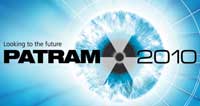
3 - 8 October 2010
London, United Kingdom
Department for Transport of the United Kingdom
more
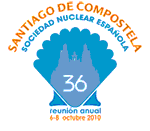
6 - 8 October 2010
Santiago de Compostela
Tel: +34 913734759
Fax: +34 912169177
more

17 - 20 October 2010
Hitotsubashi Memorial Hall, Tokyo, Japan
Japan Atomic Energy Agency
more

9th International Conference on Tritium Science and Technology
24 - 29 October 2010
Nara, Japan
National Instiute for Fusion Science Safety and Environmental Research
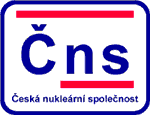
1 - 3 November 2010
Prague, Czech Republik
Czech Nuclear Society
more
2 - 3 November 2010
Rgeged Centre, Penrit, Cumbria, United Kingdom
more

4 - 9 September 2011
Nagoya, Japan
Atomic Energy Society of Japan
email: global2011@jaea.go.jp
more
http://www.euronuclear.org/e-news/e-news-28/Member-Societies.htm

Austrian
Nuclear Society |
Belgian
Nuclear Society |
Bulgarian
Nuclear Society |
Croatian
Nuclear Society |
Czech Nuclear Society |
Finnish
Nuclear Society |
French
Nuclear Energy Society (SFEN) |
German
Nuclear Society (KTG) |
Hungarian
Nuclear Society |
The
Israel Nuclear Society |
Italian
Nuclear Association |
Lithuanian
Nuclear Energy Association |
Netherlands Nuclear Society |
The Nuclear Institute |
Nuclear
Society of Russia |
Nuclear
Society of Serbia |
Nuclear
Society of Slovenia |
Polish
Nuclear Society |
Romanian
Nuclear Energy Association (AREN) |
Slovak
Nuclear Society |
Spanish
Nuclear Society |
Swedish
Nuclear Society |
Swiss
Nuclear Society |
http://www.euronuclear.org/e-news/e-news-28/Corporate-Members.htm

Links to ENS Corporate Members
|
http://www.euronuclear.org/e-news/e-news-28/editorial.htm
Mark O’Donovan, Editor-in-Chief
Contributors to this Issue:
Mathieu Carey (NucNet)
Kirsten Epskamp (ENS)
Enrique Gonzalez (CIEMAT)
Pierre Goldschmidt (HSC)
Edouard Hourcade (Chair ENS-YGN)
Bernard Ponsard (SCK.CEN)
Frigyes Reisch (KTH)
Vladimir Slugen (ENS)
Thomas Stummer (TU Vienna - Atominstitut)
Andrew Teller (Areva)
Jean Van Vyve (BNS)
Igor Vuković (ENS YGN)
Pablo Zuloaga (ENRESA)
Realisation:
Marion Brünglinghaus
Rue Belliard 65, BE-1040 Brussels
Phone +32 2 505 30 50 - Fax: +32 2 502 39 02
E-mail: info@euronuclear.org - http://www.euronuclear.org
The ENS News is a quarterly publication, in electronic
form only.
Copyright notice ©2010 European Nuclear Society.
Reproduction is authorised provided that the ENS News is acknowledged as the
source – except where otherwise stated.
![]()
© European Nuclear Society, 2010